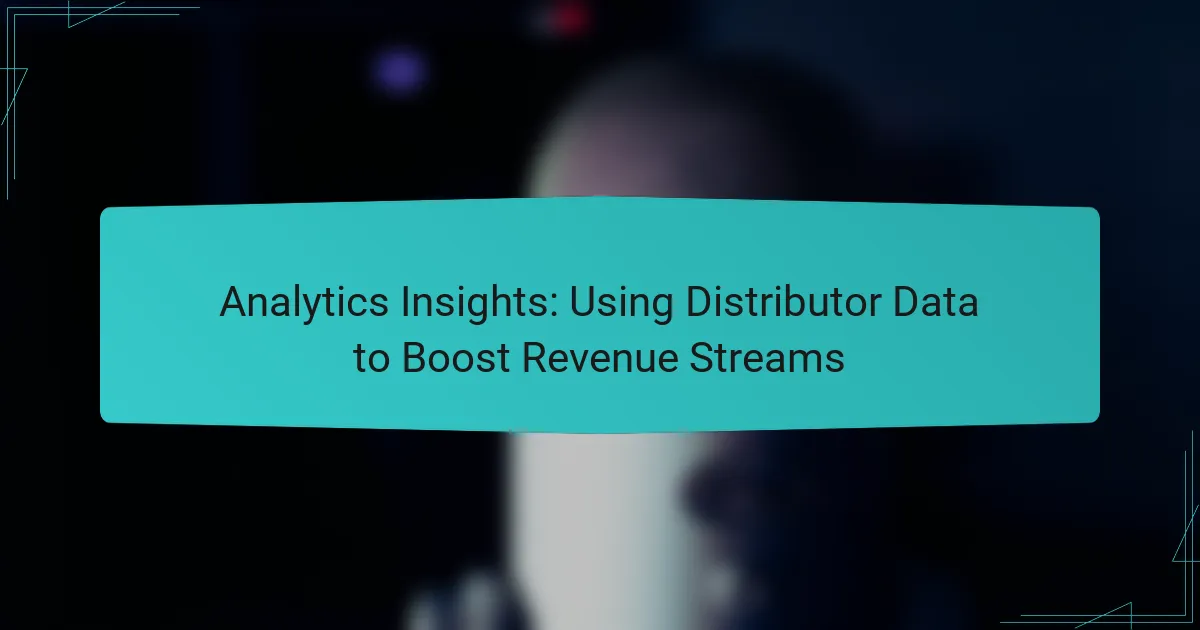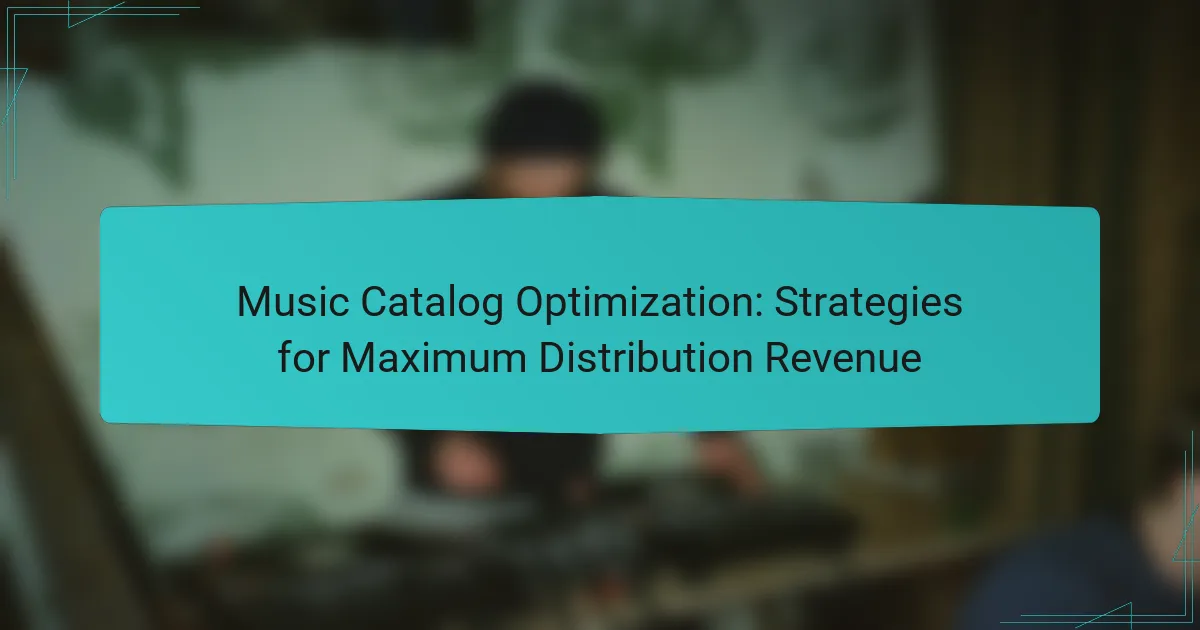Digital music distribution plays a crucial role in enhancing merchandise sales by fostering direct connections between artists and their fans. By utilizing streaming platforms and effective marketing strategies, artists can seamlessly promote their merchandise alongside their music, increasing visibility and driving sales. Selecting the right distribution service is essential, as factors like pricing, royalty rates, and customer support can significantly influence overall success.
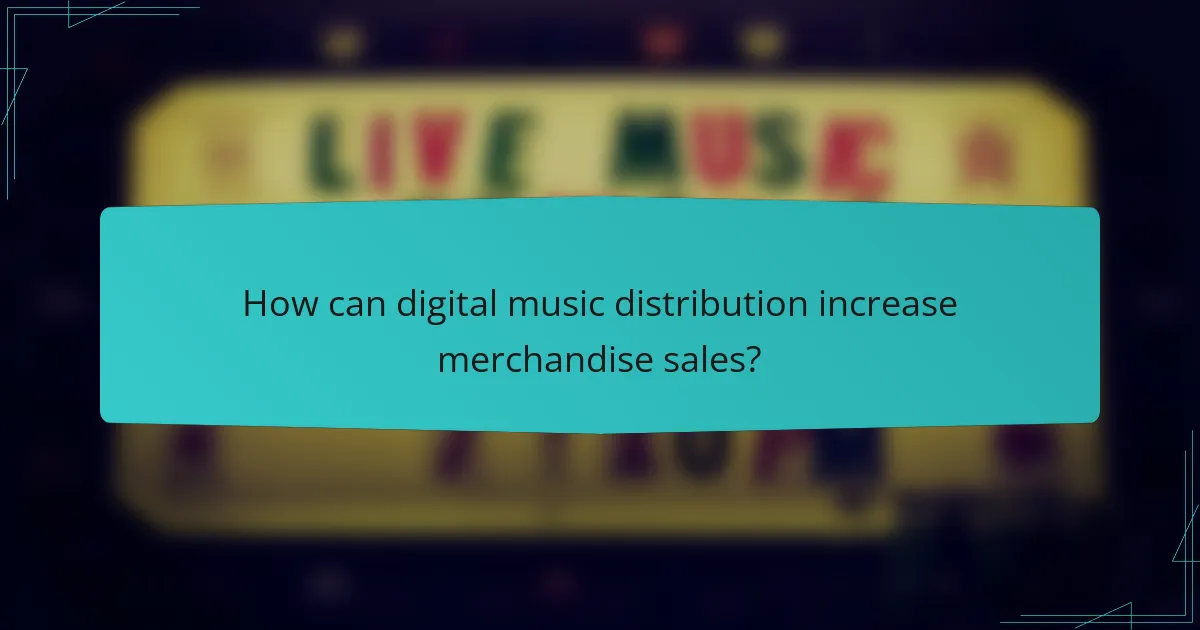
How can digital music distribution increase merchandise sales?
Digital music distribution can significantly boost merchandise sales by creating direct connections between artists and their fans. By leveraging streaming platforms and targeted marketing, artists can effectively promote their merchandise alongside their music, enhancing visibility and driving sales.
Direct integration with streaming platforms
Integrating merchandise sales directly with streaming platforms allows artists to showcase their products to listeners at the moment of engagement. For instance, platforms like Spotify and Apple Music can feature merchandise links on artist profiles or within playlists, making it easy for fans to purchase items while enjoying music.
This seamless connection can lead to increased conversion rates, as fans are more likely to buy merchandise when it is readily accessible. Artists should ensure their merchandise is well-represented with high-quality images and clear descriptions to attract potential buyers.
Targeted marketing campaigns
Targeted marketing campaigns can effectively promote merchandise by reaching specific audience segments. Artists can utilize data from streaming services to identify listener demographics and tailor their marketing efforts accordingly, focusing on fans who are most likely to purchase merchandise.
Using tools like email marketing and social media ads, artists can create personalized campaigns that highlight new merchandise, special promotions, or exclusive items. This approach can increase engagement and drive sales, especially during album releases or tours.
Leveraging social media platforms
Social media platforms are powerful tools for promoting merchandise alongside music. Artists can share behind-the-scenes content, product launches, and special offers directly with their followers, creating a sense of community and urgency around their merchandise.
Engaging content, such as videos or live streams showcasing merchandise, can capture attention and encourage purchases. Artists should maintain a consistent posting schedule and interact with fans to build a loyal customer base.
Collaborations with influencers
Collaborating with influencers can amplify merchandise visibility and reach new audiences. Influencers who resonate with an artist’s brand can showcase merchandise to their followers, providing authentic endorsements that drive interest and sales.
Choosing the right influencers is crucial; they should align with the artist’s image and target audience. Artists can offer exclusive merchandise or discounts to influencers’ followers to incentivize engagement and purchases.
Utilizing data analytics for audience insights
Data analytics can provide valuable insights into audience behavior and preferences, informing merchandise strategies. By analyzing streaming data, social media interactions, and sales trends, artists can identify which products resonate most with their fans.
Utilizing these insights allows artists to optimize their merchandise offerings, ensuring they stock items that appeal to their audience. Regularly reviewing analytics can help artists adapt their strategies and maximize sales opportunities.
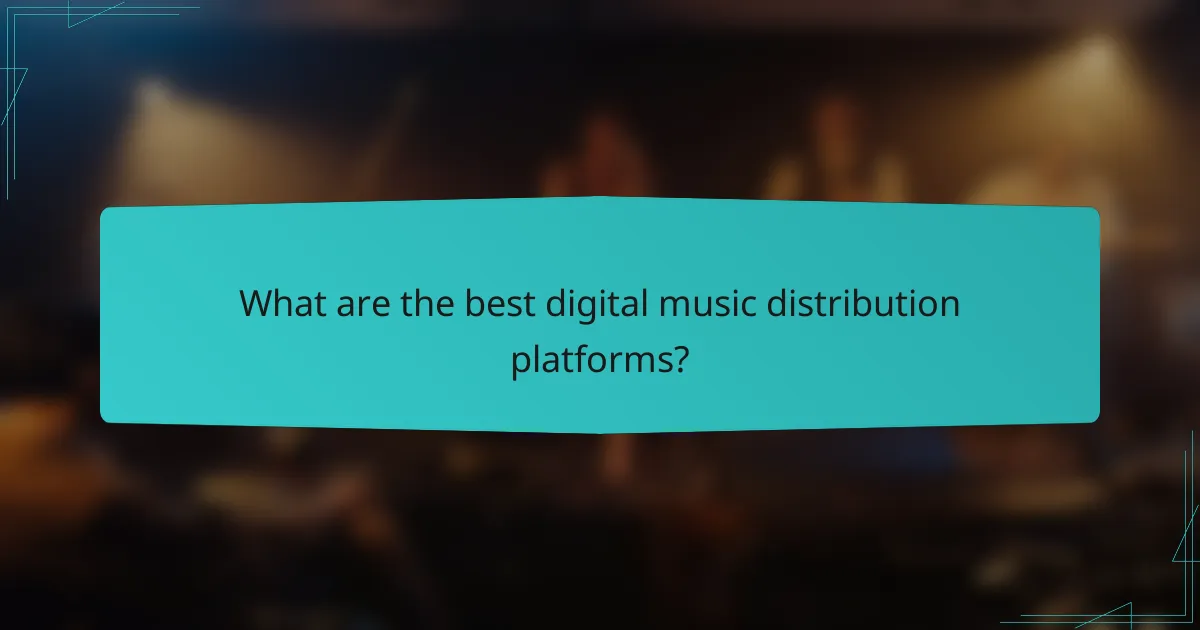
What are the best digital music distribution platforms?
The best digital music distribution platforms help artists distribute their music to major streaming services while maximizing revenue and merchandise sales. Key factors to consider include fees, payout structures, and additional services offered by each platform.
CD Baby
CD Baby is a popular choice for independent musicians, offering a straightforward distribution process to platforms like Spotify and Apple Music. They charge a one-time fee per album or single, which allows artists to keep 100% of their royalties.
In addition to music distribution, CD Baby provides services such as CD and vinyl sales, licensing opportunities, and promotional tools. This can help artists boost their merchandise sales alongside their music releases.
TuneCore
TuneCore operates on a subscription model, requiring artists to pay an annual fee for each release. This platform distributes music to a wide range of digital services and allows artists to retain 100% of their earnings.
TuneCore also offers additional services like music publishing administration and sync licensing, which can enhance revenue opportunities. Artists should weigh the annual costs against potential earnings to determine if TuneCore is the right fit for their needs.
DistroKid
DistroKid is known for its low-cost, unlimited distribution model, charging a flat annual fee that covers all releases. This makes it an attractive option for prolific artists who release multiple tracks each year.
With DistroKid, artists can access features like automatic revenue splits with collaborators and the ability to upload directly to platforms like TikTok. This flexibility can help artists maximize their merchandise sales by reaching broader audiences.
AWAL
AWAL is a distribution platform that focuses on artists with a proven track record. They offer a unique approach by providing personalized support and marketing tools to help artists grow their fanbase.
AWAL does not charge upfront fees; instead, they take a percentage of the royalties. This model can be beneficial for artists who prefer to invest their earnings back into merchandise and promotional efforts as they grow their careers.
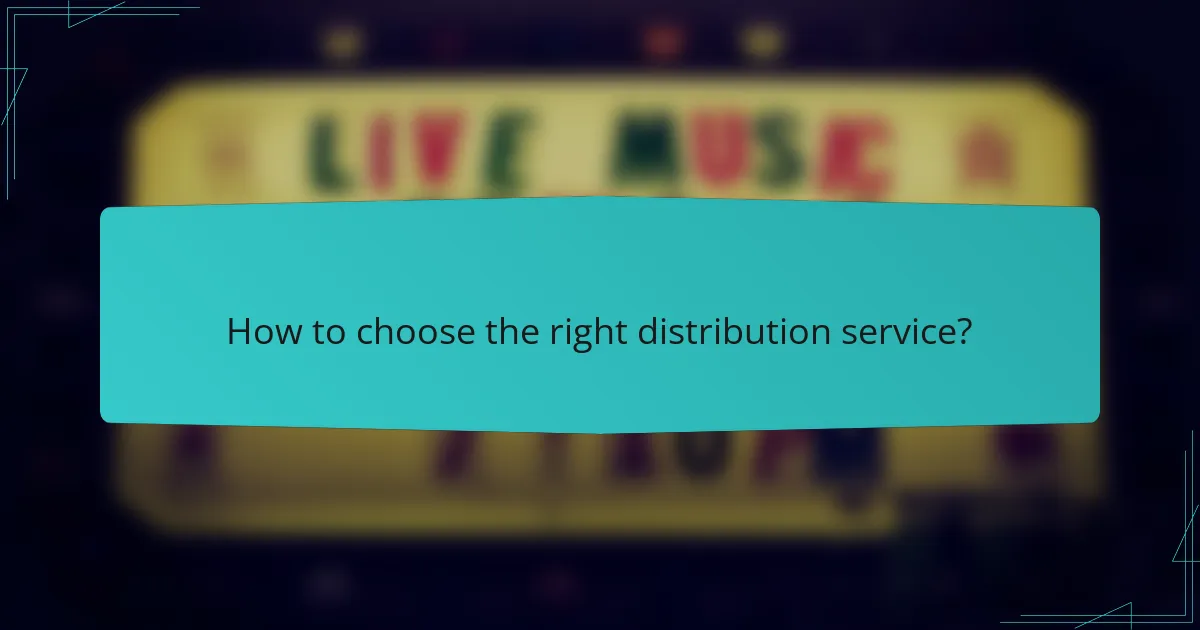
How to choose the right distribution service?
Choosing the right digital music distribution service involves evaluating several key factors that can significantly impact your merchandise sales. Focus on pricing structures, royalty rates, available distribution channels, and the quality of customer support to make an informed decision.
Pricing structures
Pricing structures can vary widely among distribution services. Some may charge a flat fee per release, while others take a percentage of your sales. It’s essential to compare these models to determine which aligns best with your budget and sales expectations.
For example, if you anticipate high sales volume, a service with a lower percentage fee might be more cost-effective. Conversely, if you’re just starting, a flat fee model could help you manage upfront costs better.
Royalty rates
Royalty rates are crucial as they determine how much you earn from your music sales. Most distribution services offer rates ranging from 70% to 90% of the revenue generated from your tracks. Understanding these rates will help you estimate your potential earnings.
Be cautious of services that offer lower royalty rates but have hidden fees that can eat into your profits. Always read the fine print to ensure you know what you’re agreeing to.
Available distribution channels
The distribution channels offered by a service can greatly affect your reach. Look for platforms that distribute to major streaming services like Spotify, Apple Music, and Amazon Music, as well as physical retailers if you plan to sell merchandise.
Some services may also provide access to niche platforms that cater to specific audiences, which can be beneficial for targeting your fan base effectively.
Customer support quality
Quality customer support is vital when issues arise with your distribution. Check if the service offers multiple support channels, such as email, phone, or live chat, and consider their response times and availability.
Reading reviews from other artists can provide insight into the reliability of a service’s support. A responsive and knowledgeable support team can help you navigate challenges and maximize your merchandise sales.
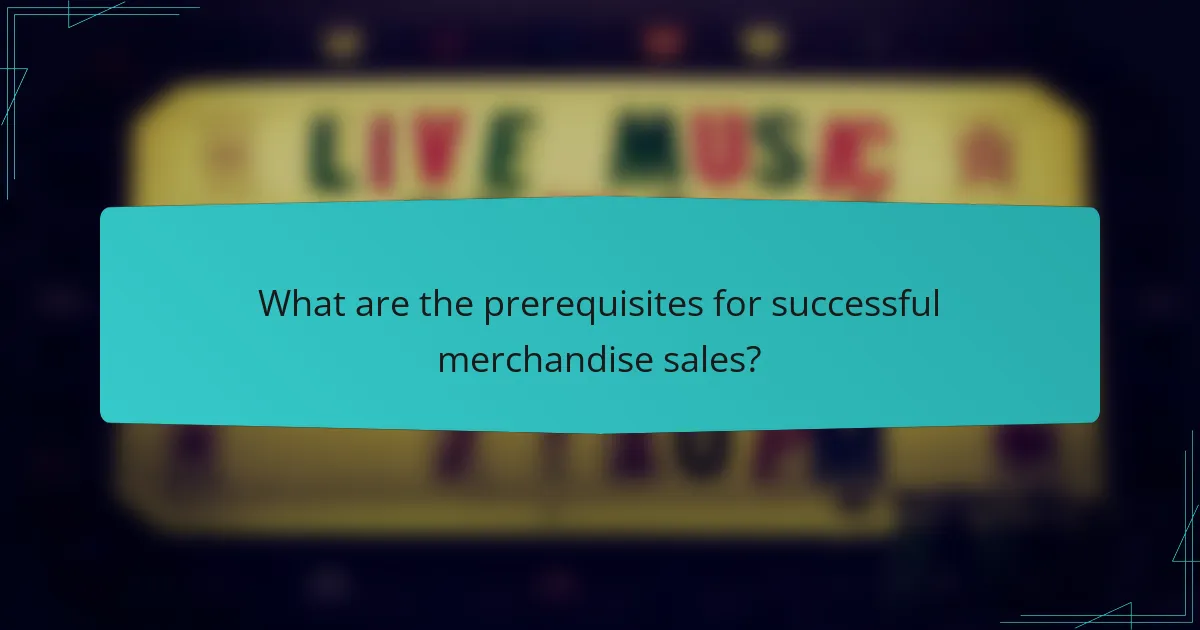
What are the prerequisites for successful merchandise sales?
Successful merchandise sales require a strong brand identity, an engaged fan base, and high-quality products. These elements work together to create a compelling offering that resonates with fans and encourages purchases.
Strong brand identity
A strong brand identity helps differentiate your merchandise from competitors. It encompasses your logo, color scheme, and overall aesthetic, which should reflect your music style and values.
To build a recognizable brand, ensure consistency across all platforms, including social media, websites, and merchandise. This consistency fosters trust and loyalty among fans.
Engaged fan base
An engaged fan base is crucial for driving merchandise sales. Fans who actively interact with your content are more likely to support your brand by purchasing products.
Utilize social media and email newsletters to keep fans informed and excited about new merchandise. Consider hosting exclusive events or offering limited-edition items to further engage your audience.
High-quality merchandise
High-quality merchandise is essential for customer satisfaction and repeat purchases. Products should be durable, visually appealing, and aligned with your brand’s identity.
When selecting merchandise, consider the materials and production processes. Offering a range of items, such as apparel, accessories, and collectibles, can cater to different fan preferences and price points.

